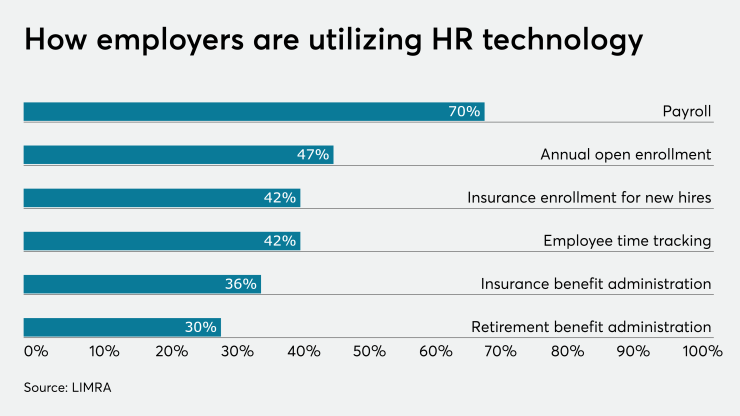The first step human resource leaders must take in delivering on social responsibility is eliminating bias. In order to achieve this goal, HR must look at the ways science-powered technology can help.
In our age of social upheaval, organizations are under a microscope. It’s not enough to give lip service to fairness and equality. Progress and proof are needed. Science and technology, including artificial intelligence, can bring positive intentions to life, if done right.
The DE&I journey for employees begins with the hiring process. Eliminating unfair bias opens the door to a cascade of positive momentum in the organizational journey towards diversity, equity and inclusion. Objective and fair recruitment and hiring can be facilitated by scientific implementation of progressive technology.
Read More:
Employers should consider there four big ideas to kickstart fairness in hiring:
Use data in the hiring process
If selection into the organization is not grounded in data and hard science, it risks becoming a biased courtship process where certain types of people are regularly preferred. Companies can become favored recruiting pools for people who look or act a certain way and they’ll be the ones to gain an edge in the interview.
Employers need to spend more time scientifically evaluating what success on a job looks. They need to gather more accurate information on candidates to better predict their likelihood of success in a bias free manner. Artificial intelligence is a useful tool, but it’s fed by massive data. Improving the data available for selection decisions is a fundamental first step to improving prediction and reducing unfair bias.
Read More:
When adopting new hiring technologies, it’s important to form trusting partnerships with technology and hiring experts, such as industrial organizational psychologists, who are grounded in job analysis and understand how to legally, fairly and accurately improve the process for selecting and onboarding new talent.
Data should be gathered and analysed through a validation process to ensure that hiring tools meet acceptable guidelines and drive fair and predictive hiring decisions, regardless of age, race or gender. By starting the selection process with an objective filter, subjective bias is reduced from the beginning.
Ensure bias-free interviewing
Data and technology can be used to generate bias-free interview questions that are linked to the science-driven behavioral insights that are both individually relevant and anchored in the fundamentals of the job.
Read More:
Technology can dynamically generate questions to explore disconnects between the person and the job requirements and give instructions on how to dig into opportunities in a fair and legally defensible fashion. The ideal tool will provide behaviourally anchored scoring guides, to further reduce subjective bias.
Raising hiring managers’ awareness of the importance of diversity and inclusive management practices can pay dividends beyond the hiring process to also promote inclusive onboarding and performance management, thereby promoting the retention of a more diverse workforce.
Removing human judgment can remove human bias but it can also remove human oversight and allow automated bias to run rampant. Audits of the impact of interviewing automations are valuable. It’s also advisable to document how an automation functions and have awareness of the selection criteria to ensure they are job related and free of adverse impact.
Read More:
Personalize the process
Beyond improving the selection decision to reduce bias, technologies can also localize and personalize the recruiting process to promote the attraction and retention of a more diverse recruitment pool. The typical automated hiring process is generic and impersonal and can serve to discourage candidates who might bring greater diversity and opportunities to the organization. By tailoring messages, providing personalized feedback and identifying untapped sources of talent, an intelligent system can uncover the ‘diamonds in the rough’ and encourage them through the process to maximize the opportunity to be hired.
Systems that can automatically adapt to candidates, highlight cultural fits to the organization independent of their surface characteristics and provide personalized encouragement and self-discovery can provide differentiation in the war for talent. When people feel recognized and valued and gain benefit from the recruiting process, they are encouraged and more likely to accept a hiring offer and recommend the organization to others.
Maintain an integrated database on the employee journey
DE&I efforts begin with hiring, but they continue throughout the employee journey. Hiring is part of a continuous process in the talent cycle and it must be informed by the whole cycle. Data must be accurately retained, reviewed and fed back into the hiring process to maintain predictive accuracy and continue directing hiring decisions towards equity and positive strategic impact.
Read More:
HR leaders need to ensure that hiring, onboarding, training, coaching, succession planning and transitioning are all accurately documented in an integrated fashion. Talent professionals should be able to easily review DE&I opportunities and have flags and levers to reduce bias and improve the impact of employees. What gets measured gets managed and HR processes can more easily be measured and managed with technology aligned with an organizational vision.
By choosing a technology partner grounded in science and focused on DE&I excellence, organizations can deliver on the new business mandates of environmental, social and corporate justice.






